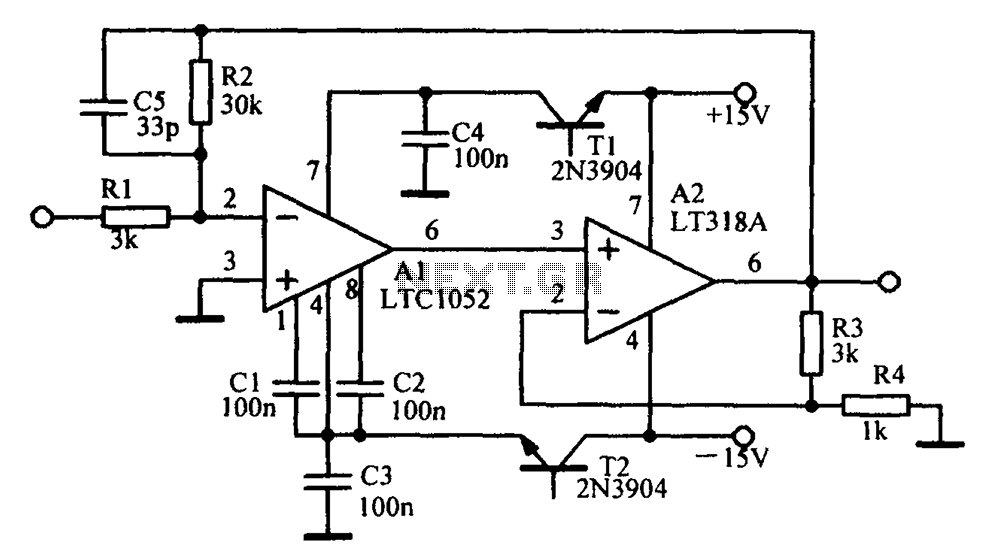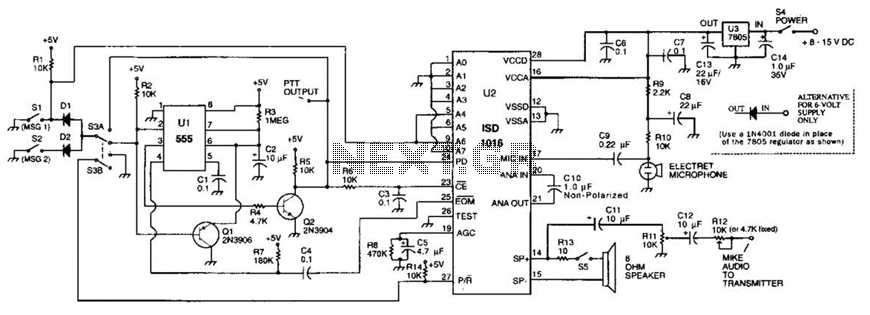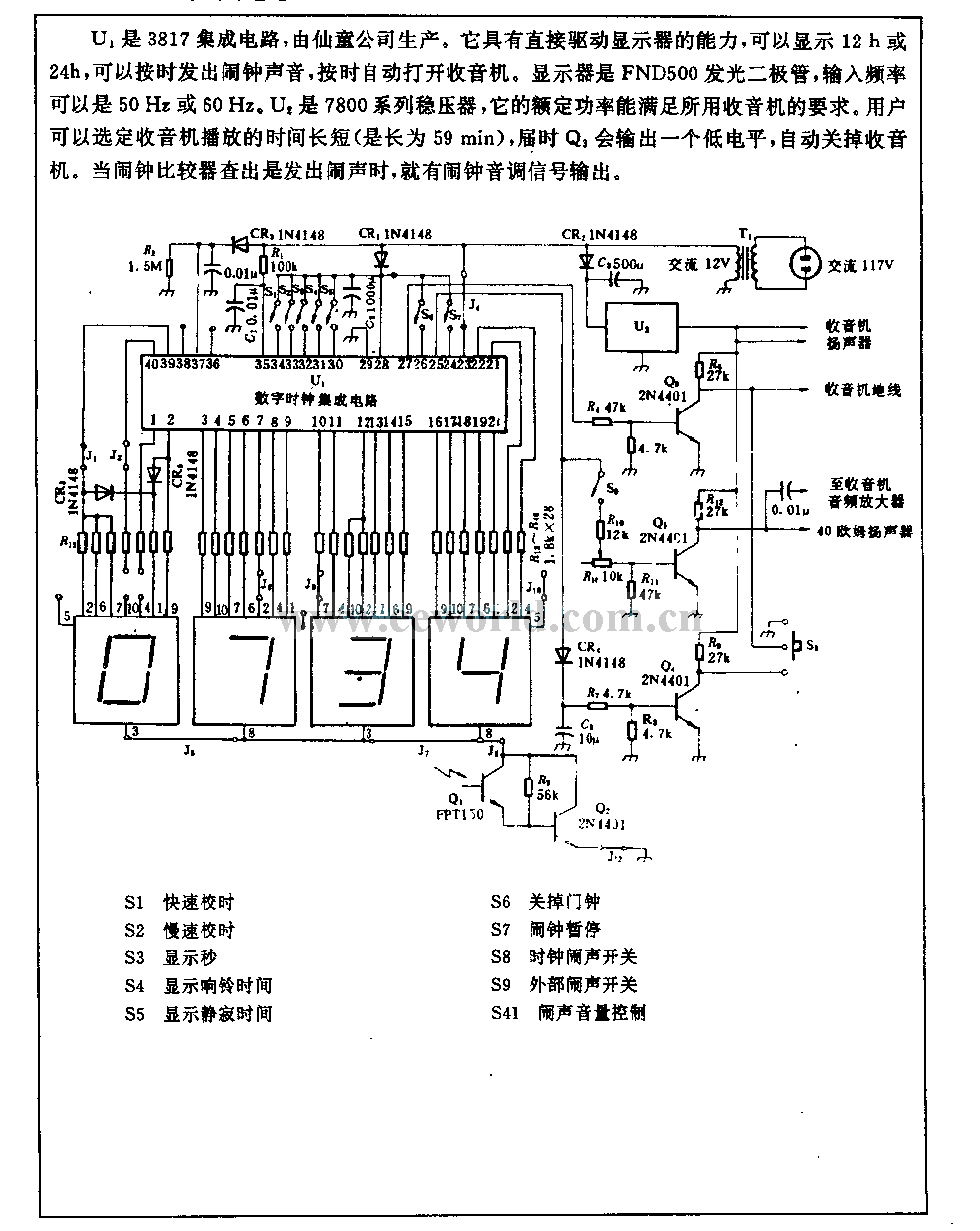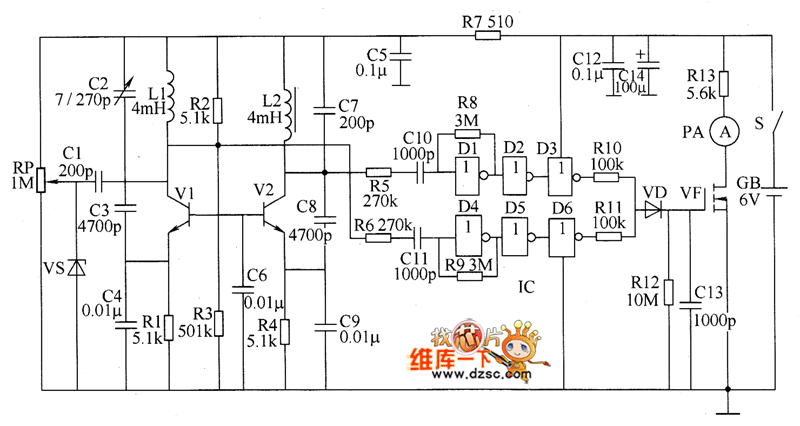
LED Color Fade Effect circuit diagram

This circuit creates an LED color fade effect. As indicated by the name, the light intensity of the LEDs in this circuit transitions from high intensity to low intensity and eventually turns off. A 30 µF capacitor and a 100 kΩ resistor (marked in blue) control the fading speed. The 100 kΩ resistor can be replaced with a 100 kΩ linear potentiometer for adjustable fading speed. The circuit utilizes an LM324 operational amplifier, which contains four op-amps; only two are used in the circuit diagram provided. The remaining two op-amps can be employed to construct a similar circuit. A BC547 transistor is used, and the LED is an ultra-bright red LED with a 220 Ω resistor in series.
This LED color fade circuit is designed to provide a visually appealing light effect through gradual intensity changes. The fading effect is achieved by utilizing a timing capacitor (30 µF) in conjunction with a resistor (100 kΩ) that determines the charge and discharge rate of the capacitor. By replacing the fixed resistor with a linear potentiometer, the user can customize the fading speed, making the circuit versatile for various applications.
The LM324 operational amplifier serves as the core of the circuit, where two of its four op-amps are configured to create the necessary control signals for the fading effect. The op-amps are set up in a feedback configuration that allows for smooth transitions in voltage levels, which in turn modulates the current flowing through the LED. The BC547 transistor acts as a switch, controlling the LED's on/off state based on the output from the op-amps.
The ultra-bright red LED, paired with a 220 Ω current-limiting resistor, ensures that the LED operates within safe parameters while achieving high brightness. The resistor is critical in preventing excess current that could damage the LED.
This circuit is suitable for decorative lighting, indicators, or any application where a gradual change in light intensity is desired. The design is simple yet effective, making it accessible for hobbyists and professionals alike.This is the circuit of LED color fade effect. Just like the name of the circuit, the light intensity of LEDs in this circuit will fade from high intensity to low intensity and then off. 30 uF condensator and the resistor marked with blue 100k control the speed of the fading. You can replace the 100 kilo ohm resistor with 100k linear potentiometer so you can adjust the speed any time. LM324 is an OP-Ampamplifier. There 4 op amp, and we just use 2 op amp in abovecircuit diagram. You may use the other 2 op-amp to build another similar circuit. Transistor is BC547 and the led isultra brightred with 220 ohm resistor in series. We aim to transmit more information by carrying articles. Please send us an E-mail to wanghuali@hqew. net within 15 days if we are involved in the problems of article content, copyright or other problems. We will delete it soon. 🔗 External reference
This LED color fade circuit is designed to provide a visually appealing light effect through gradual intensity changes. The fading effect is achieved by utilizing a timing capacitor (30 µF) in conjunction with a resistor (100 kΩ) that determines the charge and discharge rate of the capacitor. By replacing the fixed resistor with a linear potentiometer, the user can customize the fading speed, making the circuit versatile for various applications.
The LM324 operational amplifier serves as the core of the circuit, where two of its four op-amps are configured to create the necessary control signals for the fading effect. The op-amps are set up in a feedback configuration that allows for smooth transitions in voltage levels, which in turn modulates the current flowing through the LED. The BC547 transistor acts as a switch, controlling the LED's on/off state based on the output from the op-amps.
The ultra-bright red LED, paired with a 220 Ω current-limiting resistor, ensures that the LED operates within safe parameters while achieving high brightness. The resistor is critical in preventing excess current that could damage the LED.
This circuit is suitable for decorative lighting, indicators, or any application where a gradual change in light intensity is desired. The design is simple yet effective, making it accessible for hobbyists and professionals alike.This is the circuit of LED color fade effect. Just like the name of the circuit, the light intensity of LEDs in this circuit will fade from high intensity to low intensity and then off. 30 uF condensator and the resistor marked with blue 100k control the speed of the fading. You can replace the 100 kilo ohm resistor with 100k linear potentiometer so you can adjust the speed any time. LM324 is an OP-Ampamplifier. There 4 op amp, and we just use 2 op amp in abovecircuit diagram. You may use the other 2 op-amp to build another similar circuit. Transistor is BC547 and the led isultra brightred with 220 ohm resistor in series. We aim to transmit more information by carrying articles. Please send us an E-mail to wanghuali@hqew. net within 15 days if we are involved in the problems of article content, copyright or other problems. We will delete it soon. 🔗 External reference
Warning: include(partials/cookie-banner.php): Failed to open stream: Permission denied in /var/www/html/nextgr/view-circuit.php on line 713
Warning: include(): Failed opening 'partials/cookie-banner.php' for inclusion (include_path='.:/usr/share/php') in /var/www/html/nextgr/view-circuit.php on line 713





